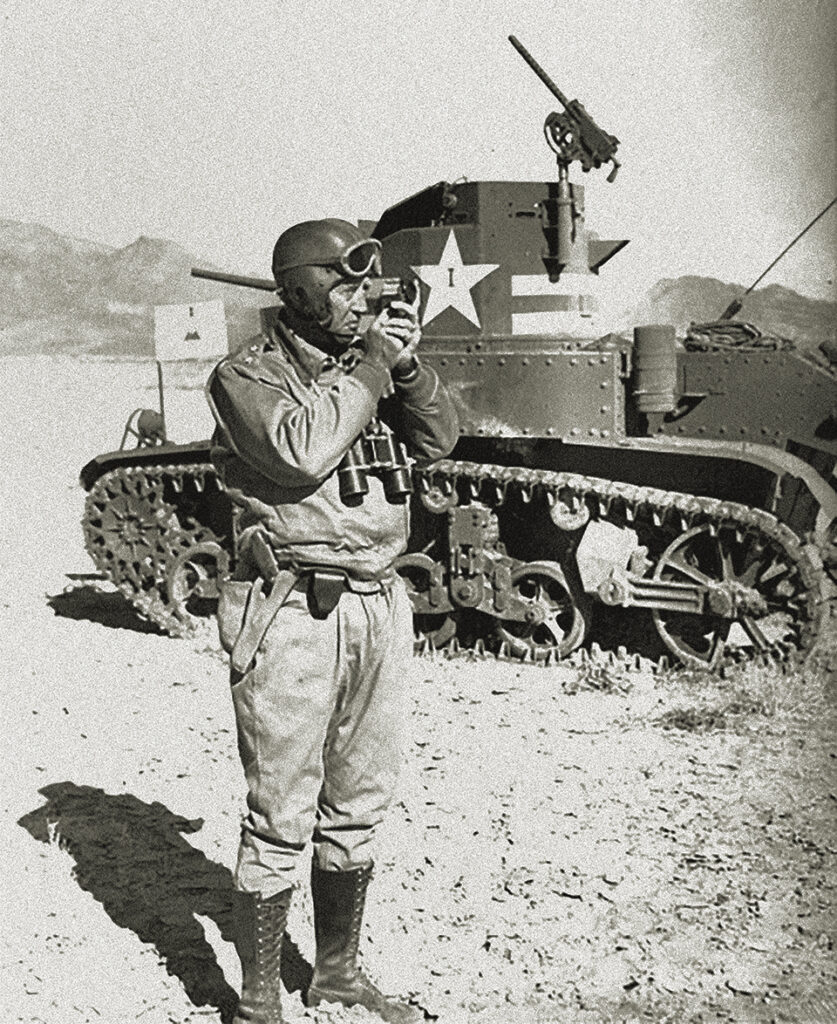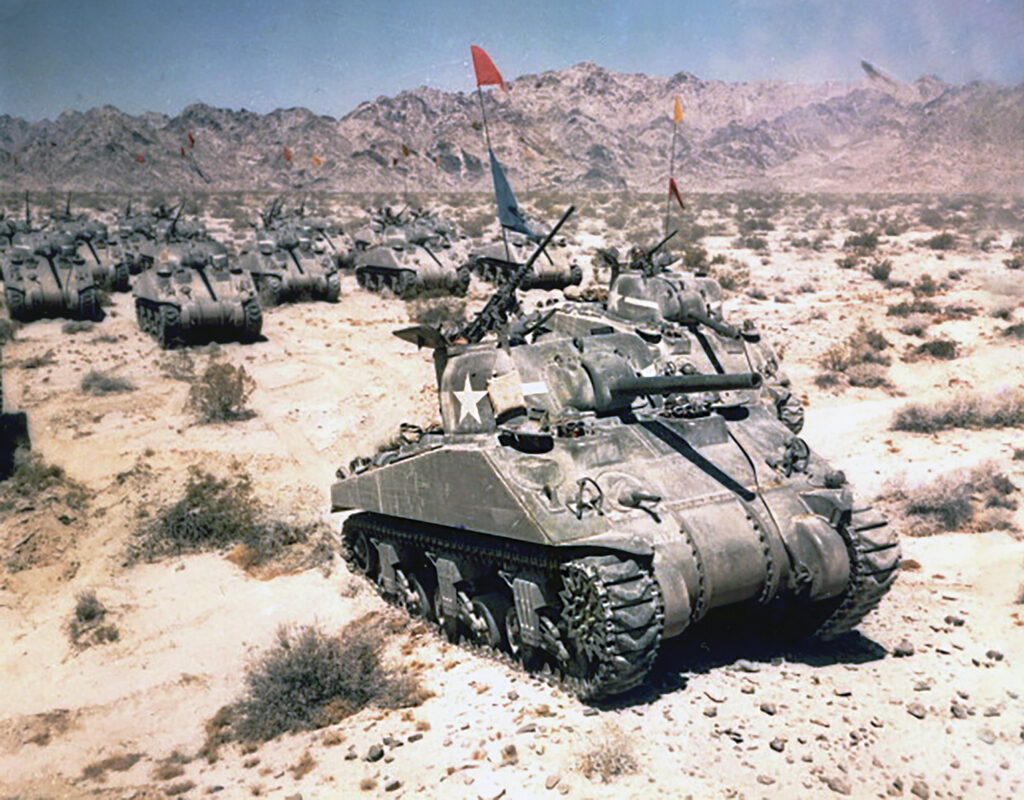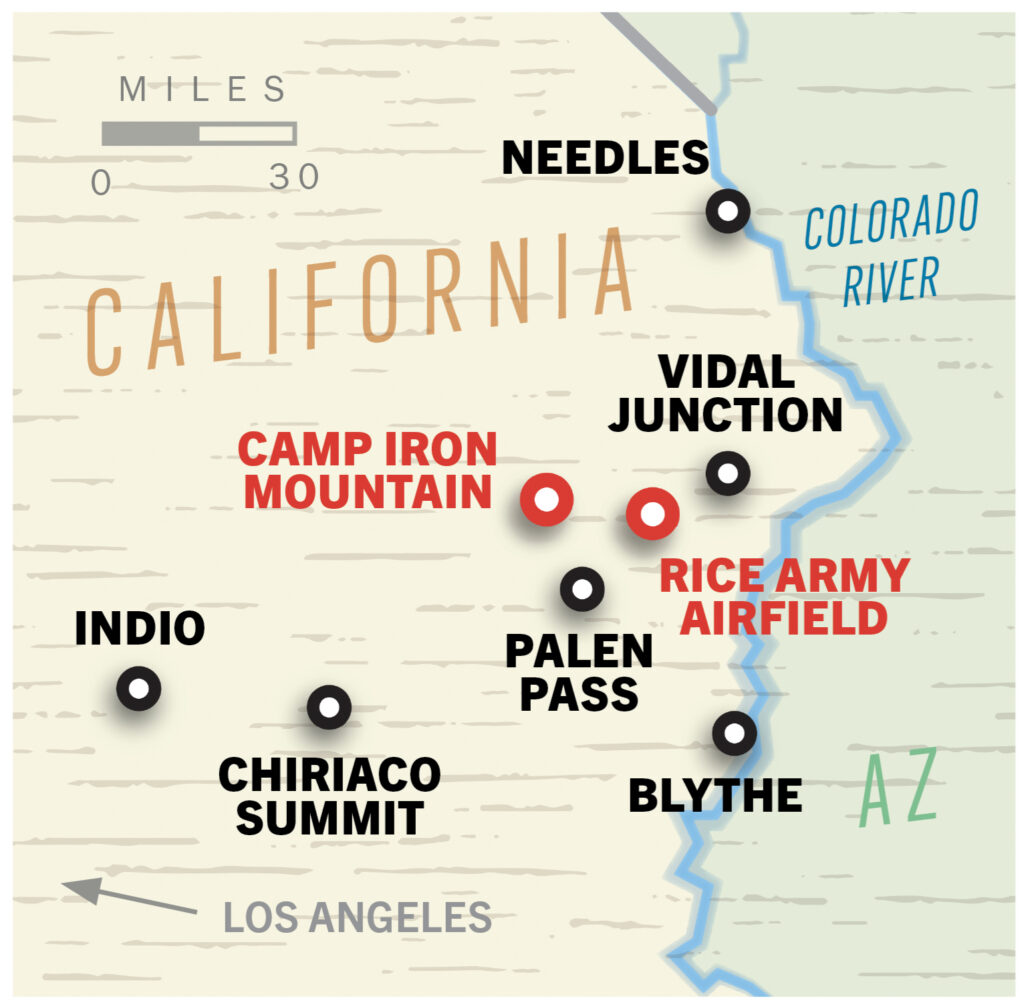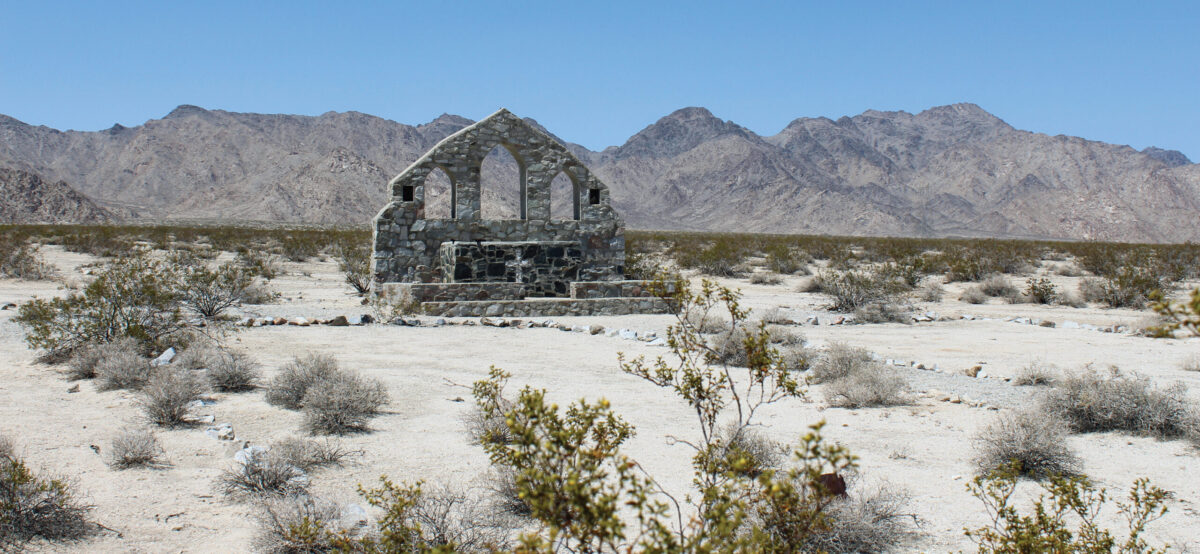On a clear April morning, I drive California State Route 62 west into the Mojave Desert searching for traces of what was once the world’s largest military training ground. More than one million soldiers passed through the Desert Training Center (DTC) between April 1942 and April 1944. Most had already completed basic training and welcomed the call to California. When they disembarked at the long-gone depots of the Santa Fe Railroad spur that parallels this highway, any fantasies of Pacific beaches and Hollywood stars were vanquished by the reality of a bleak, arid expanse fenced by distant sawtooth mountains.
By the time the United States entered World War II, British troops had been battling German and Italian advances in Libya and Egypt for 15 months. While none of the belligerents in North Africa proved ready to fight effectively in the sand and extreme heat, the Germans adapted faster than the Allies. As the United States prepared to join the campaign, it recognized the need to modify armored strategies and tactics and prepare its soldiers and equipment for the harsh desert climate. Army Ground Forces assigned Major General George S. Patton Jr., then commanding the I Armored Corps, to scout a suitable training ground.
Patton wanted his men hardened for the realities of the theater. Having been born and raised in the Los Angeles suburbs, he knew just the place to do it. “The California desert can kill quicker than the enemy,” he announced at a staff meeting. In March 1942, the army acquired more than 10 million acres of mostly public land in southeastern California, western Arizona, and southern Nevada. The DTC spanned parts of the Mojave and Sonoran Deserts but offered fresh water from the Colorado River and its aqueducts, as well as access to three railroads for moving troops and equipment.

Soldiers were billeted in 12 temporary division-size camps spread throughout the DTC, with a total capacity of nearly 200,000 people. Pulling to the side of the highway some 30 miles west of Vidal Junction and the last food and gas I’ll see for hours, I peer to the northwest for signs of the best-preserved camp. Iron Mountain was laid out in a three-by-one-mile grid of dirt-floor pyramidical tents that could house well over 15,000 men, but its only remaining vertical structures are a pair of altars that served as outdoor chapels. From this distance, any vestiges of the camp are hidden in a thick carpet of sage brush and yellow-flowering creosote bushes.
After a helpful call to the Bureau of Land Management (BLM), which manages most of the former DTC area, I locate the single-lane road that runs from the highway to the southern end of the camp. Judging the sand too soft for my two-wheel-drive rental car, I lace up my hiking boots and grab a water bottle as the temperature climbs into the 80s. After a mile and a half, the monotony of the desert shrubbery is broken by the neat lines of rocks that DTC soldiers placed to landscape their camps and outline tents, field kitchens, latrines, and other features of their spartan yet sprawling temporary cities. There are no interpretive signs. An uninformed wanderer might think she had stumbled upon a rocky, quadrilateral version of a crop circle.
Strolling the deserted avenues, I spot the arched top of the Catholic altar. Handmade with stones surrounding a white quartz cross, it stands twice my height. I sit for a moment in the bare patches of sand where soldiers once prayed, enjoying absolute quiet until the wind whips up, swirling sand that instantly blurs the skyline. “Sand in your bed. Sand in your shoes. We had to live with sand. We got to where we hated sand,” remembered Wiley Milford Thornton, veteran of the 95th Infantry Division, in Sands of War, a BLM-sponsored documentary on life at the DTC.

The average soldier trained at the DTC for 14 weeks, participating in a series of exercises that advanced from small unit to division level and included marches as long as 200 miles, live-fire drills, and multi-day maneuvers. To condition troops for the limited resources of North Africa, men were typically restricted to one canteen of water per day. According to California State Parks historian Matt Bischoff, many of the roughly 1,000 soldiers who died in training at the DTC succumbed to dehydration. In the summer, temperatures in what the 773rd Tank Destroyer Battalion dubbed in its official journal “a desert designed for hell” could reach 130 degrees in the shadeless afternoon—and 160 degrees inside a tank.
Patton, who often roamed the desert with a rented loudspeaker so he could chide or applaud his soldiers, was recalled to Washington, D.C., in July 1942 to plan Operation Torch, the Allied invasion of French North Africa. Six other corps commanders would follow him to the DTC in succession, each taking advantage of the open, unoccupied terrain to experiment with task force composition and supply lines and rehearse coordination among infantry, armored, and air divisions. Fighter and bomber groups trained at five DTC air fields, including Rice Army Airfield, 20 miles east of Camp Iron Mountain.

I backtrack east on Route 62 until I spy a dark gray obelisk on the south side, marking the remains of the airfield. A faint dirt road takes me a few hundred yards to the crumbling foundations of old storage buildings. The eclectic mix of artifacts I find signals that most of the people who venture out here these days are not drawn by the history. Wartime ration containers mingle in the blond sand with modern beer cans and the discarded shell casings from shotguns that have riddled the rusty insides of a piano and the frame of an old car abandoned on Rice Army Airfield’s broad concrete parking apron. Eighty years ago, Bell P-39 Airacobras and Curtiss P-40 Warhawks waited here for the call to strafe mock enemy targets and cover ground forces marching into the tangle of mountains rising to the south, including Palen Pass.
To reach the pass, the final maneuver area for many of the 60 armored, infantry, and artillery divisions that trained at the DTC, I drive west then south around the mountains, passing two more division camps before heading east on Interstate 10 through the Chuckwalla Valley. Known in the DTC as “Little Libya” for its environmental similarities to North Africa, this was a proving ground for desert warfare enhancements that included vented combat boots, weapon lubricants, and new vehicle cooling systems. The Chuckwalla’s climate continues to inspire innovation. The valley is home to some of the country’s first and largest solar energy farms, whose dark blue rectangular panels stretch for miles in blinding contrast to the otherwise sepia-toned landscape.
After the Allies declared victory in North Africa in May 1943, the U.S. Army no longer needed desert training. Yet field commanders valued the rigor and realism of exercises in the DTC, which had grown to more than 18,000 square miles. In October, the training center was renamed the California-Arizona Maneuver Area (CAMA).

I exit the freeway at Blythe, a sleepy town three miles shy of the Arizona border, and wind my way up a series of mountain roads into the heart of Palen Pass. I explore on foot the narrow valley where whole divisions faced off in mock combat. The descending sun casts a golden glow over the network of shallow gullies where tens of thousands of soldiers dug in for starry desert nights as the dust and smoke settled from daytime battles. The only clues I find of their presence are occasional corroding bits of metal and faint parallel tank tracks in the gravely dirt.
The increasing demand for soldiers overseas led Army Ground Forces to scale back on the personnel necessary to support the CAMA. It was decommissioned in April 1944 and after the war the army returned the land to the Department of the Interior. The training center is memorialized in the General Patton Memorial Museum at Chiriaco Summit, California, which I visit the next morning. Open since 1988, the museum lies within the boundaries of Camp Young, the DTC/CAMA headquarters. In addition to historic tanks and an illustrated timeline of Patton’s life, the museum houses training center artifacts that range from mailboxes and tattered unit pendants to pianos that likely accompanied Saturday night dances with “The Desert Battalion,” a group of young women bused in from southern California cities to boost the morale of sun-bronzed, war-bound soldiers.
City dwellers are still drawn to the desert for entertainment. The annual Coachella Valley Music and Arts Festival has summoned 120,000 visitors to nearby Indio this weekend. Local lodging is limited and as I navigate a potholed road through Camp Young, I pass a desert tortoise and a few revelers boondocking among the rows of rocks outlining the former location of the camp’s 3,200 tents. Tuning out their modern music, I take one last, slow walk through the timeless heat of the desert.






